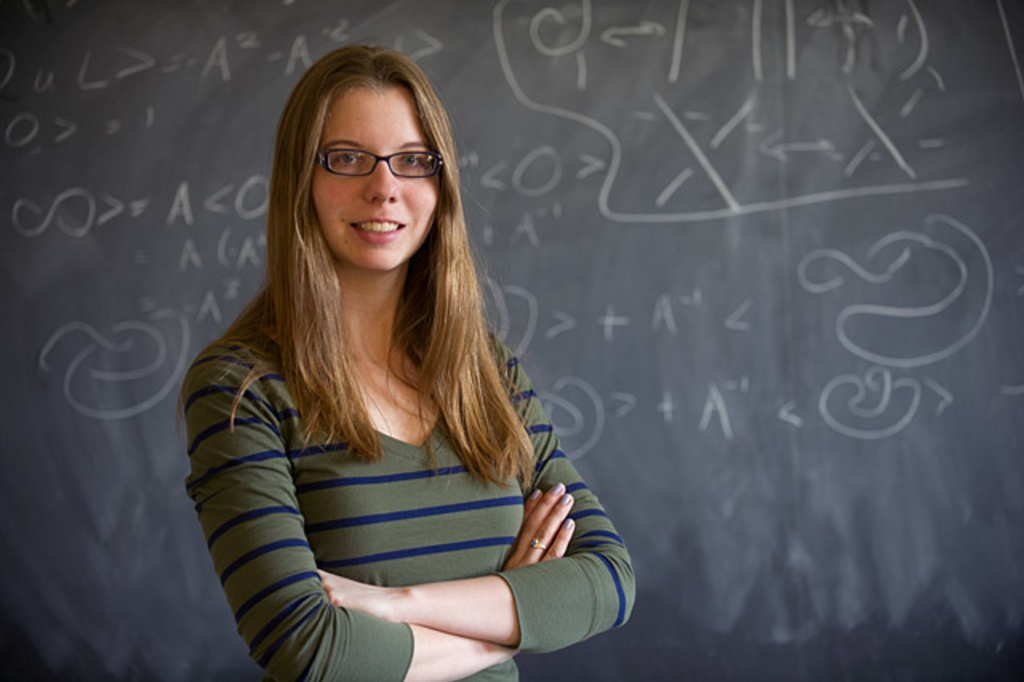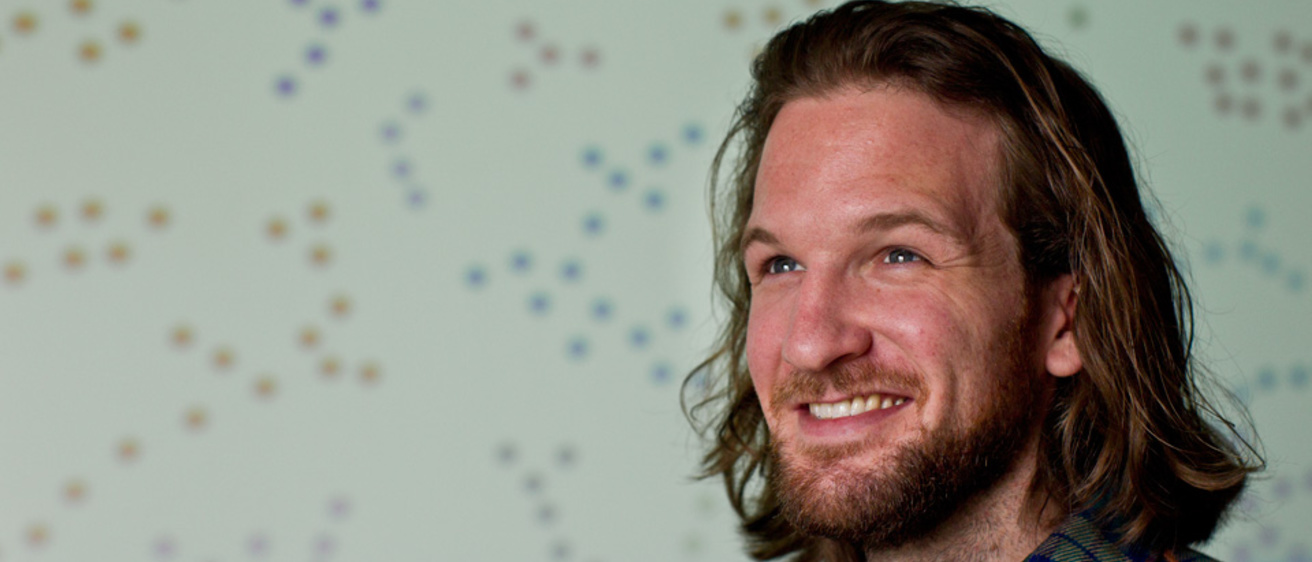You’ve heard about how retailers are tracking what you buy, mining data to figure out what you like, what you need, and which coupons you’re likely to use?
Well, they are.
Most famously, Target recently targeted a teenage girl with coupons tailored to an expectant mother. The girl’s irate father called Target headquarters demanding an apology, accusing the company of encouraging a teenager to get pregnant. Turns out, the girl was pregnant—Target knew it before the father.
You might think that’s creepy. Colorado Reed thinks it’s cool, and incredibly interesting. In fact, he wants to make a career of it.
“The chance to work at a university like Cambridge—it’s where Stephen Hawking is. It’s where Isaac Newton was. It is the university to work in math and physics.”—UI senior Suzanne Carter
Suzanne Carter is different. She’s fascinated with knots.
“Knot theory,” she says, “is basically taking your shoelace, tying it up in a knot, and gluing the ends together—what do you have? What is this thing you’ve built?”
Both graduating seniors at the University of Iowa, Reed and Carter were honored this spring as Churchill Scholars, which is a highly prestigious award recognizing students pursuing graduate study in engineering, math, and the sciences. Only 14 Churchills are awarded nationwide each year, and Iowa had only two previous winners. So...this was a big deal.
The Churchill funds a year of study at Cambridge University, where Reed and Carter will continue their passionate pursuit of knowledge.
“I expect it to be wonderful,” says Carter, a math and physics major from St. Paul, Minn. “The chance to work at a university like Cambridge—it’s where Stephen Hawking is. It’s where Isaac Newton was. It is the university to work in math and physics.”
Reed and Carter also have been awarded National Science Foundation Graduate Research Fellowships, which will support continued education and research after their year abroad.
At Cambridge, Reed, an applied physics major from Colfax, Iowa, will have the opportunity to work with professor Zoubin Ghahramani, one of the world’s preeminent minds on machine learning. Reed’s focus will be furthering his aptitude for advanced statistics, which is required to do cutting-edge research.
Reed is a long way from where he started when he came to Iowa thinking he would one day be a doctor. He quickly turned his attention to math and physics. He got into high-energy physics and loved it, particularly the data collection and analysis. It was at a workshop during his sophomore year that he was introduced to data mining and machine learning, which essentially boils down to pattern recognition within large sets of data.
“I just thought it was so cool,” Reed says. “I wanted to dive into it even further.”
Dive in he did.
Reed interned at the California Institute of Technology, studying gravitational waves, looking for data patterns that would indicate a change in distance the size of an atom between the earth and the sun. He used machine learning algorithms to address this incredibly difficult problem — the same types of algorithms Target used for their direct advertising. Inspired by both the real-world and scientific applications of machine learning, Colorado made it his goal to develop new algorithms that would help solve difficult problems in physics and astronomy as well as contribute to real-world applications such as movie recommendations, self-driving cars, or even direct marketing.
The genesis of Carter’s interest in knot theory was a month-long class at Carleton College the summer after her freshman year. She was intrigued and returned to Iowa eager to learn more.

“I liked the idea of playing around with something that could be so physical but really is this abstract object that only exists in your head,” Carter says. “The cool part about it is that this physical knot thing is mathematics in itself. You don’t have to be working with equations. You can perform manipulations on knots, on diagrams, that have nothing to do with numbers and still what you’re doing is math.”
Knot theory, it turns out, perfectly tied together math and physics for Carter and set her on an academic path she plans to pursue well beyond Cambridge, into advanced study at UC-Berkeley, and eventually into research and teaching. Her research has focused on physics, specifically the Chern-Simons and Yang-Mills field theories, which seek to describe the universe around us. Knot invariants—the physical mathematical objects to which Carter refers—are one aspect of her work with Chern-Simons and Yang-Mills she most enjoys.
Cambridge will not be Carter’s first educational experience abroad. She spent last summer living in Paris, working at the Centre de recherché et de restauration des musées de France (Center for Research and Restoration of Museums of France), investigating techniques to image frescos covered in plaster, including some in the Cathedral of Our Lady in Chartres and a Neolithic burial site in Turkey.
Reed, too, has academic aspirations beyond Cambridge. Like Carter, he plans to pursue a Ph.D. at UC-Berkeley, where he will study under the guidance of the “Michael Jordan of machine learning”—professor Michael I. Jordan, who was Ghahramani’s advisor and has tutored some of the greatest minds in the field.
“I’m hoping to be another one of those names,” Reed says. “I want my work to have impact. That’s something I was straining to find in other scientific fields, something that could change our daily lives. I look around—this is changing our lives.”
